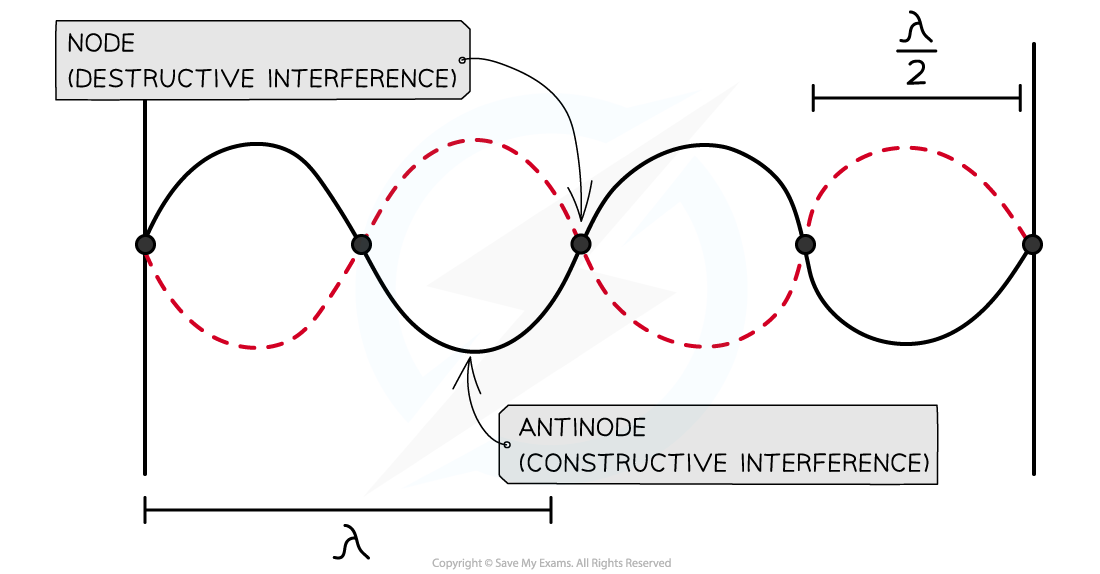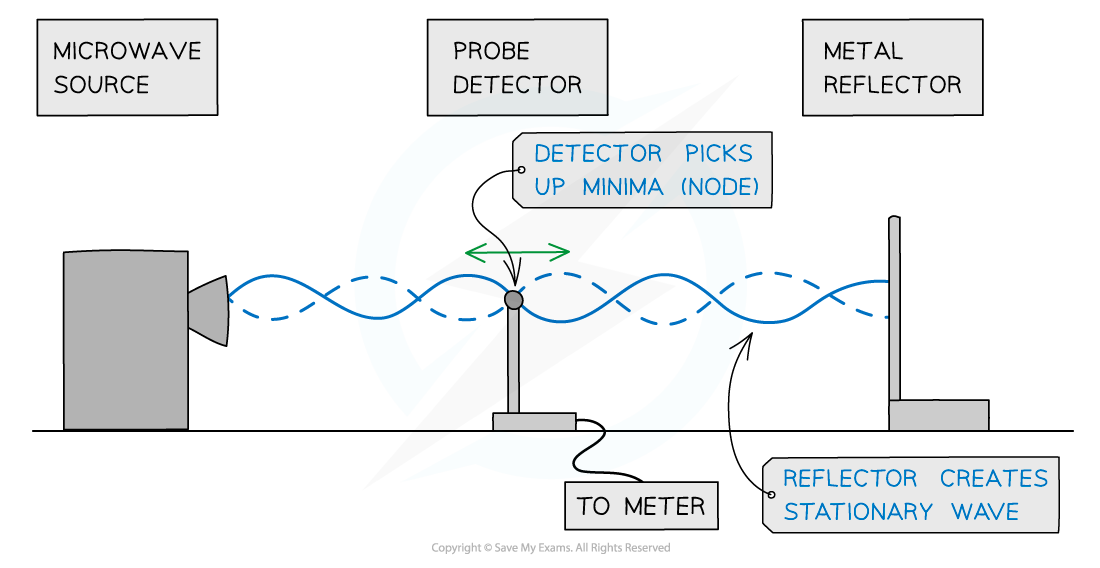Formation of Stationary Waves (AQA AS Physics) : Revision Note
Formation of Stationary Waves
The Principle of Superposition
The principle of superposition states:
When two or more waves with the same frequency arrive at a point, the resultant displacement is the sum of the displacements of each wave
This principle describes how waves that meet at a point in space interact
When two waves with the same frequency and amplitude arrive at a point, they superpose either:
In phase, causing constructive interference. The peaks and troughs line up on both waves and the resultant wave has double the amplitude
In anti-phase, causing destructive interference. The peaks on one wave line up with the troughs of the other. The resultant wave has no amplitude

Waves in superposition can undergo constructive or destructive interference
The principle of superposition applies to all types of waves i.e. transverse and longitudinal, progressive and stationary
The Formation of Stationary Waves
A stationary wave is formed when:
Two waves travelling in opposite directions along the same line with the same frequency superpose
The waves must have:
The same wavelength)
A similar amplitude
As a result of superposition, a resultant wave is produced

Nodes and antinodes are a result of destructive and constructive interference respectively
At the nodes:
The waves are in anti-phase meaning destructive interference occurs
This causes the two waves to cancel each other out
At the antinodes:
The waves are in phase meaning constructive interference occurs
This causes the waves to add together
Each point on the stationary wave has a different amplitude (unlike a progressive / travelling wave where each point has the same amplitude)

A graphical representation of how stationary waves are formed - the black line represents the resulting wave
Examples of Stationary Waves
Stretched Strings
Vibrations caused by stationary waves on a stretched string produce sound
This is how stringed instruments, such as guitars or violins, work
This can be demonstrated by a length of string under tension fixed at one end and vibrations made by an oscillator:

Stationary wave on a stretched string
At specific frequencies, known as resonant frequencies, a whole number of half wavelengths will fit on the length of the string
As the resonant frequencies of the oscillator are achieved, standing waves with different numbers of minima (nodes) and maxima (antinodes) form
Microwaves
A microwave source is placed in line with a reflecting plate and a small detector between the two
The reflector can be moved to and from the source to vary the stationary wave pattern formed
By moving the detector, it can pick up the minima (nodes) and maxima (antinodes) of the stationary wave pattern

Using microwaves to demonstrate stationary waves
Sound Waves
Sound waves can be produced as a result of the formation of stationary waves inside an air column
This is how musical instruments, such as clarinets and organs, work
This can be demonstrated by placing a fine powder inside the air column and a loudspeaker at the open end
At certain frequencies, the powder forms evenly spaced heaps along the tube, showing where there is zero disturbance as a result of the nodes of the stationary wave

Stationary wave in an air column
In order to produce a stationary wave, there must be a minima (node) at one end and a maxima (antinode) at the end with the loudspeaker
Examiner Tips and Tricks
Always refer back to the experiment or scenario in an exam question e.g. the wave produced by a loudspeaker reflects at the end of a tube. This reflected wave, with the same frequency, overlaps the initial wave to create a stationary wave.

You've read 0 of your 5 free revision notes this week
Sign up now. It’s free!
Did this page help you?
